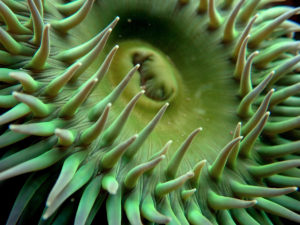The Dungeness crab (Cancer magister) is the largest edible true crab on the West Coast, and it supports a large but strictly controlled and sustainable fishery. The crabs are caught in traps offshore, and only male crabs are harvested. Females must be immediately released, so they can produce successive generations.
Dungeness crabs live in bays and inlets, and on the continental shelf, mostly in sandy areas. They are carnivorous, feeding on over 40 different types of prey, including other crabs. In turn, Dungeness crabs are eaten by several octopus, several kinds of fish, and humans.
Like insects and other animals with exoskeletons, crabs can grow only by shedding of their shells and growing new ones in a process called molting. With each molt, an individual typically gets 15 to 25 percent larger.
The timing of mating is connected to molting: Mating occurs between a hard-shelled male and a recently molted female. The female extrudes eggs several months after mating, and the mass of eggs remains attached to her abdomen for several more months. An average-sized female broods about 1.5 million eggs, which generally hatch December and January.
After hatching, young crabs progress through several free-swimming, and rather uncrablike, larval stages before they eventually begin to look like little crabs. At this point, they migrate along the ocean bottom into shallow protected areas, including San Francisco Bay, where they spend about a year, before returning to the ocean. Bay-reared crabs tend to grow faster than crabs that stay in the ocean. They reach a harvestable size in three to four years.

.jpg)


-300x221.jpg)
-300x221.jpg)